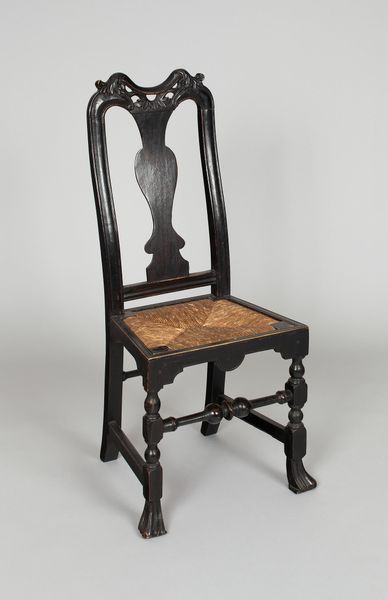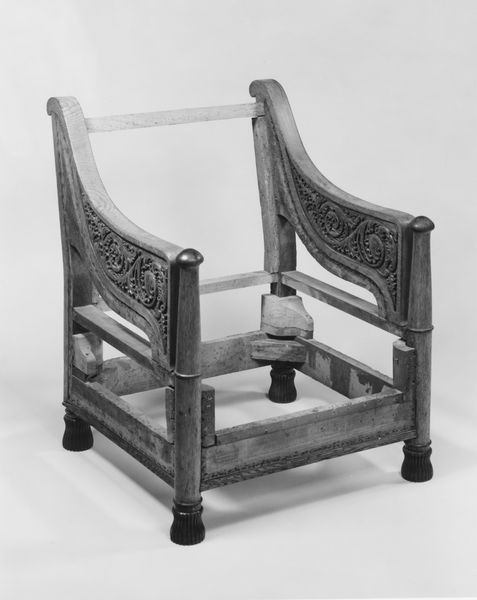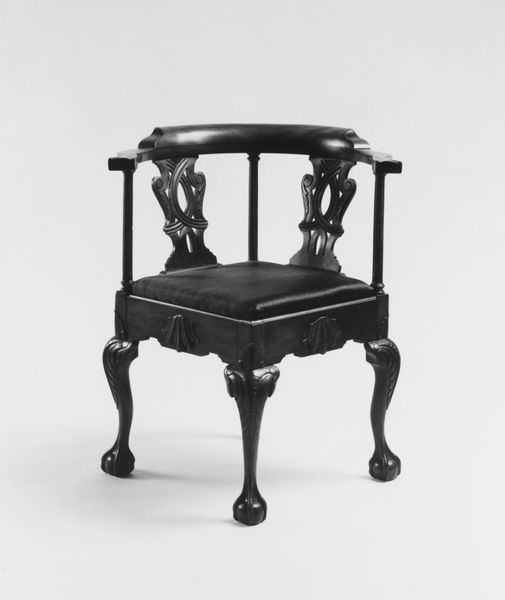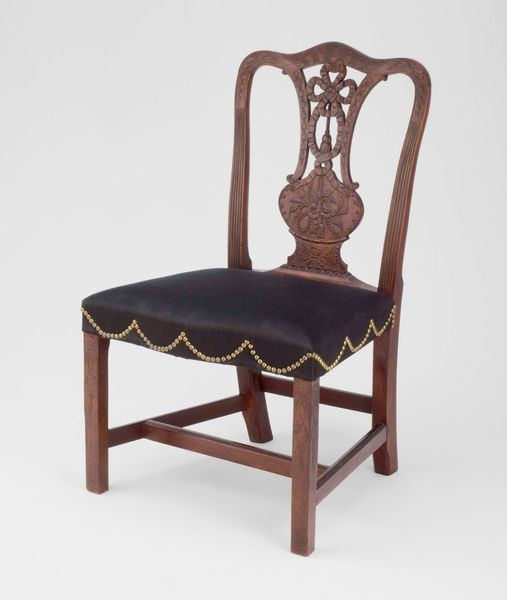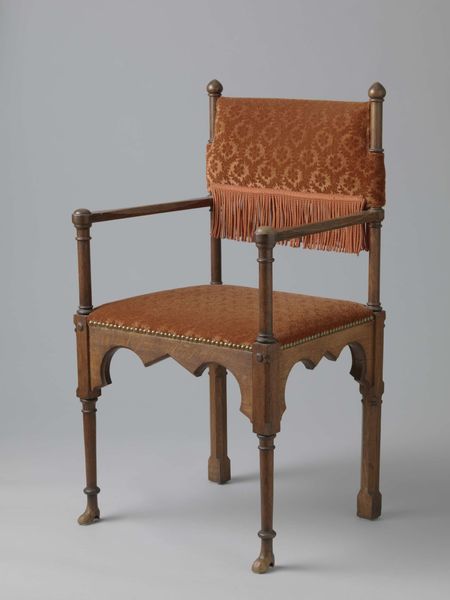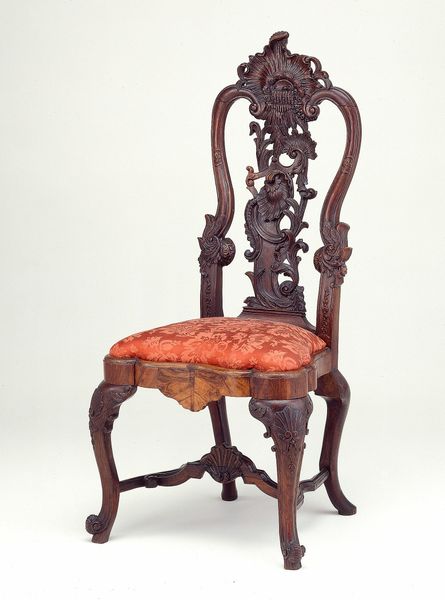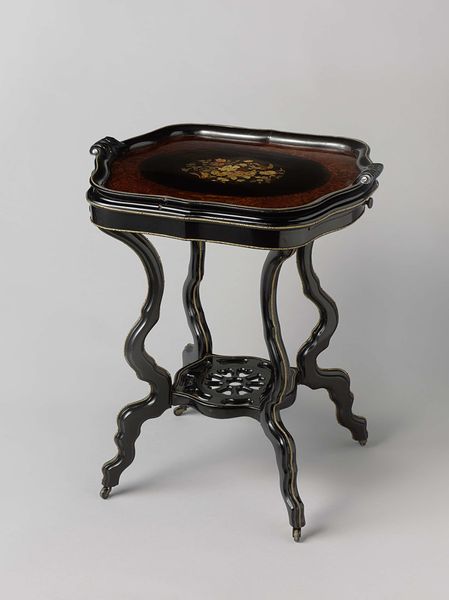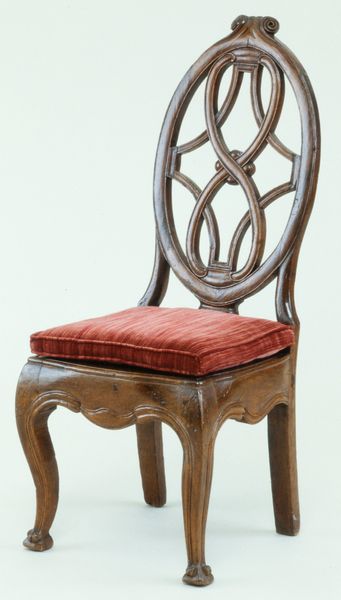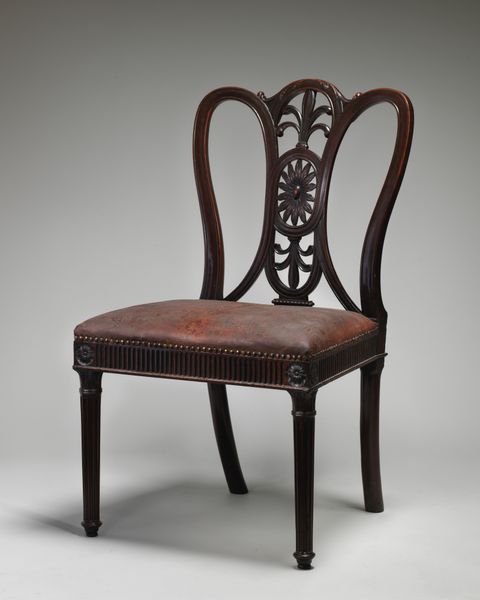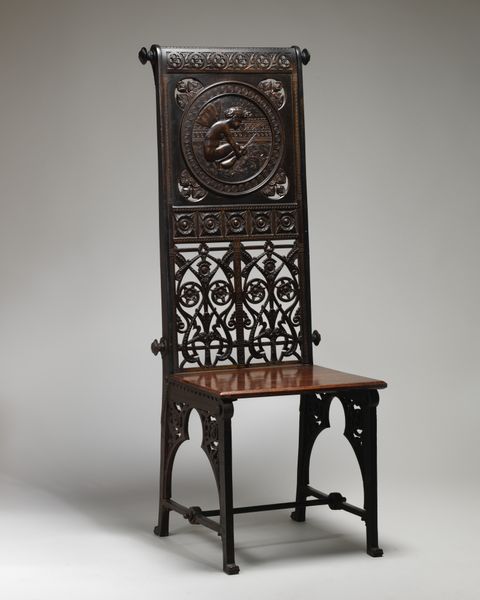
steel, sculpture
#
steel
#
baroque
#
sculpture
#
england
#
sculpture
#
decorative-art
Dimensions: 26 1/4 x 37 3/4in. (66.7 x 95.9cm)
Copyright: Public Domain
Curator: This intriguing object, a “Dog grate,” dates to 1720-1725 in England and is currently housed at the Minneapolis Institute of Art. It is made of steel, reflecting Baroque and Decorative Art sensibilities. What are your initial thoughts on it? Editor: Stark. Despite the ornate flourishes, it reads as profoundly functional and undeniably cold. The steel seems almost… foreboding. I imagine it presiding over a shadowy hearth. Curator: It's fascinating how something intended for domestic comfort can evoke such feelings. The grate served a clear purpose in homes of a certain class. Think about the societal implications; owning such a decorative, yet practical, item displayed wealth and control over resources, like heat. Editor: Exactly! And consider the labor involved. Someone, or more likely several someones, hammered and shaped this steel. We're talking about specialized metalworking, perhaps a forge powered by unseen labor, creating what is essentially a container for fuel, designed to maximize efficiency and control. There is a contrast between its decorative aspects and its utility for managing a core, material requirement for life. Curator: A valid point. This reflects the period, where craftsmanship was intertwined with social standing. These decorative grates became symbols. The details, even the material choice, conveyed a message about the owner's cultivated taste and place in society. Fireplaces, during that period, were more than just heat sources; they were focal points of social interaction and architectural displays. Editor: The material itself reinforces that point, right? Steel isn't just functional here; the dark coloring probably masked coal residue better than polished metals, requiring less intensive, constant cleaning. How subversive it is: we’re admiring the craftsmanship of something fundamentally tied to managing dirty waste! Curator: It speaks to our complicated relationship with domestic life and artifice. By observing functional art forms, we obtain deeper insight into the lives, beliefs, and aesthetic inclinations of past communities. Editor: Ultimately, it is fascinating how something crafted to contain the most primal element – fire – also confines, through its own making, entire systems of labor, class, and consumption.
Comments
No comments
Be the first to comment and join the conversation on the ultimate creative platform.

